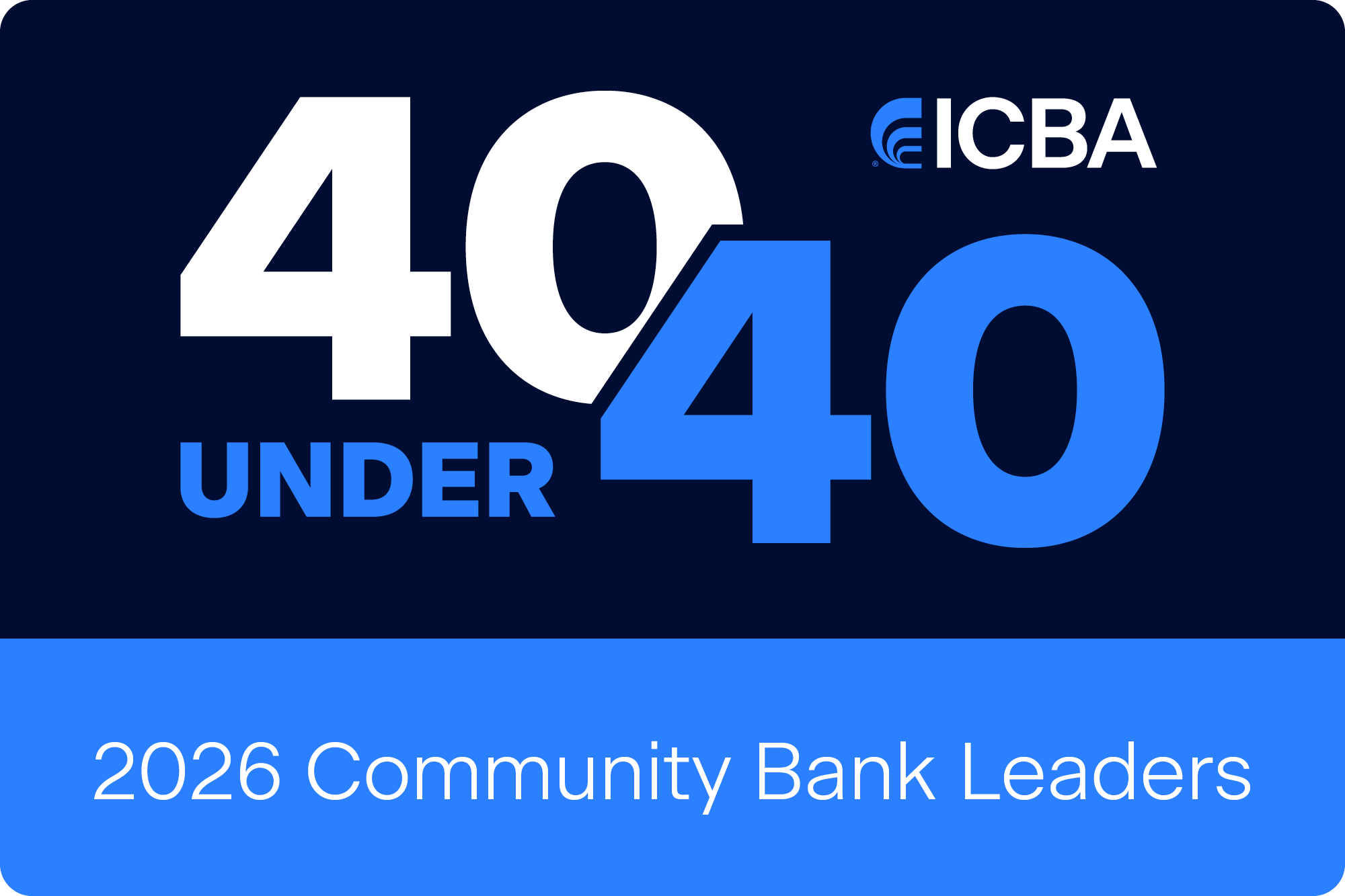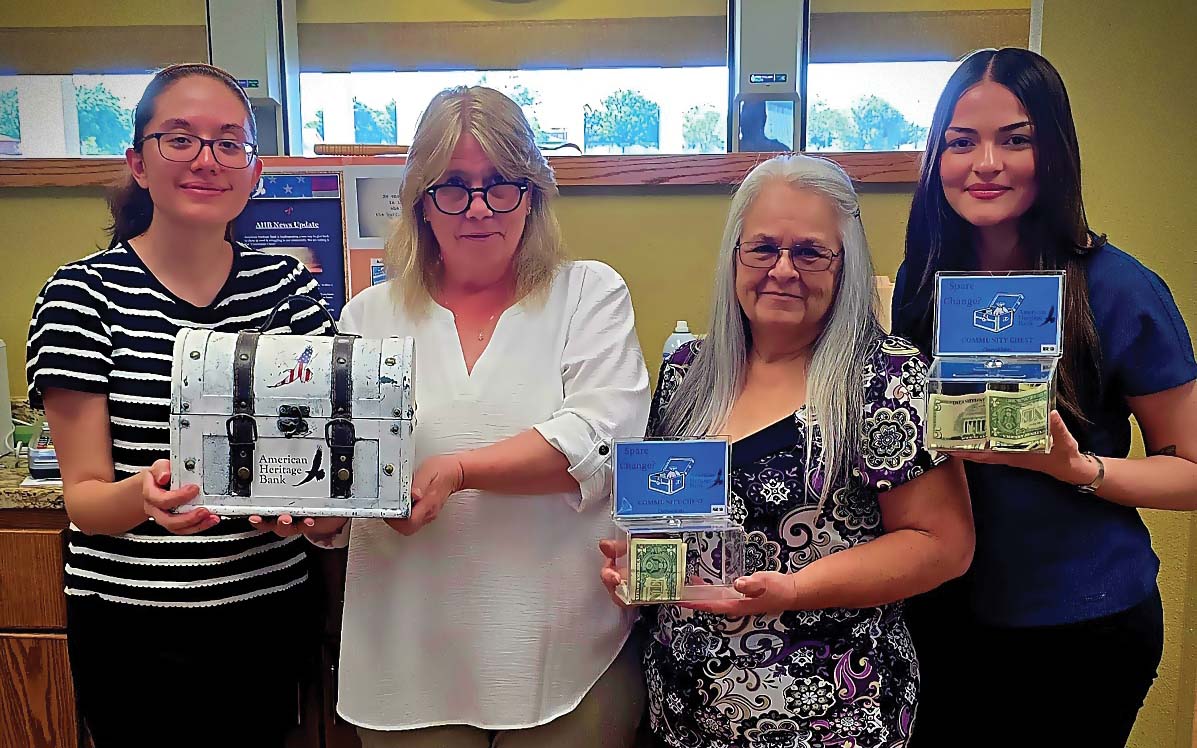Supporting local causes and charities is a core differentiator of community banks. To that end, some community banks have elected to form foundations to be lasting stewards of their charitable contributions.
Why community banks form charitable foundations
November 01, 2021 / By Judith Sears
Supporting local causes and charities is a core differentiator of community banks. To that end, some community banks have elected to form foundations to be lasting stewards of their charitable contributions.
Giving back to the community is inscribed in the DNA of community banks, but some have taken the further step of establishing charitable foundations to formalize their philanthropic activities.
James Vaccaro, board chair of $2.6 billion-asset Manasquan Bank in Manasquan, N.J., which established the Manasquan Bank Charitable Foundation in 2014, sees charitable foundations as the embodiment of a community bank’s mission.
A foundation is not subject to the whims of the bank if there’s an economic downturn. A foundation is the best chance of long-term, sustainable giving.”
—Robert Marling, Woodforest Financial Group
“As a bank, I need a sustainable business plan with good metrics,” Vaccaro says. “If I combine that with the mission of the organization, ensuring that we are good citizens of the marketplace, there is no better way to do that than through a charitable foundation.”
The nonprofit, independent status of these entities buttresses Manasquan Bank’s charitable efforts. Foundations, for example, have a greater immunity to the business cycle. “I served as chairman of United Way, and I learned that when it’s a tough economic year, the giving from companies slows down,” says Robert Marling, chairman and CEO of Woodforest Financial Group, the parent company of $9 billion-asset Woodforest National Bank in The Woodlands, Texas. “That’s also exactly the time when charities and organizations need more support. A foundation is not subject to the whims of the bank if there’s an economic downturn. A foundation is the best chance of long-term, sustainable giving.”
“We wanted to honor our heritage by making sure that not only did we not back off from charitable giving, but that we continued to do it in the future.”
—John Finch, Ulster Savings Bank
John Finch, chief operating officer of $1.3 billion-asset Ulster Savings Bank in Kingston, N.Y., and executive director of the Ulster Savings Charitable Foundation, agrees. “The bank’s contributions can fluctuate. The foundation ensures that giving stays steady,” he says. “We wanted to honor our heritage by making sure that not only did we not back off from charitable giving, but that we continued to do it in the future.”

The Woodforest Charitable Foundation has supported Children’s Safe Harbor, a nonprofit aimed at ending child sexual abuse and trauma, since 2009.

The Conroe, Texas, chapter of the Salvation Army has received donations from the foundation, too.
Marling says a charitable foundation also ensures that community support continues even if bank ownership changes. In 2004, Woodforest National Bank explored going public. It received an offer for acquisition, which the community bank rejected, partly because of the impact it might have on its community giving and involvement.
This realization prompted the creation of the Woodforest Charitable Foundation. “We want to leave a legacy of giving to the community that helped us grow and become a success,” Marling says. “If the company were to ever sell or leave the marketplace, we have a vehicle for continued giving to our community. The foundation cements the giving to the community that helped us grow.”
Potential ownership changes also motivated $420 million-asset Equitable Bank in Grand Island, Neb., to create the Equitable Charitable Foundation in 2005. The community bank had been operating as a mutual thrift bank but went public and formed a mutual holding company. Because this meant wide public ownership, Equitable Bank’s board and executives formed a charitable foundation. “They felt the foundation was a way to maintain that community spirit,” says Tom Gdowski, chairman of the Equitable Financial Corporation Board.
How one community bank’s foundation is preserving local history

Tom Gdowski and Pamela L. Price of Equitable Bank tour the Stuhr Museum.
The Stuhr Museum in Grand Island, Neb., isn’t your typical museum. Consisting of 107 modern and historic buildings spread across 206 acres, the museum gives visitors an immersive experience inside the world of 19th century prairie pioneers. A railroad town covers four city blocks and includes a blacksmith shop, tinsmith shop and planning mill. The museum hosts more than 60,000 visitors annually, including 13,000 school children.
“It’s one of the leading living history museums in the country,” says Pamela L. Price, chairman of Grand Island, Neb.-based Equitable Bank’s Equitable Charitable Foundation board, which has donated to the museum since 2006. “Their projects are so interesting, and people come from all across the country.”
The foundation’s donations have helped fund the restoration and preservation of a number of museum structures, including the Leo B. Stuhr Building, a historically designated structure originally designed by renowned architect Edward Durell Stone.
With 107 buildings, Stuhr Museum has to replace a lot of roofs. So, between 2018 and 2019, the museum ran a Raise the Roof campaign. Equitable Bank stepped in with a donation.
“Stuhr Museum is woven into the fabric of our community,” says Bonnie Smith, the museum’s executive director. “Without Stuhr, our history disappears. We provide the pivotal link from where we came from to who we are today. Equitable’s funding has been instrumental in moving our operations forward. We are a private entity held in public trust, and without organizational support, we simply would not exist.”
Giving in many ways
Community banks with charitable foundations continue to give back to their communities out of their annual budgets, but the type of giving differs from that of their foundations.
“A charitable foundation augments; it doesn’t displace,” Marling says. “The bank can sponsor a golf tournament to help veterans or a cancer society, while the foundation gives to a food bank. Regulations prohibit the foundation from sponsoring events or organizations.”
In some instances, a community bank may be able to make donations more spontaneously. Whereas a foundation may meet quarterly or annually to distribute funds, banks may be in a position to respond to an immediate need. “Some needs are for time-sensitive projects and the bank handles those,” says Gdowski, adding that the bank’s donations are typically smaller than those of the foundation.
While money is essential for funding a foundation, community bankers agree the actual setup and operation of a foundation is relatively straightforward and costs are usually modest. A foundation setup checklist should include articles of incorporation, bylaws, and applying for a tax ID and exemption. It’s not hard to find attorneys and independent accounting firms to handle these issues, and a bank’s own compliance team will often have the necessary regulatory expertise.
Meanwhile, foundations can operate leanly, typically with either no or few full-time staff and modest expenses. The community banks absorb the setup and ongoing foundation costs.
“I’m the bank’s COO but also the executive director of the Ulster Savings Charitable Foundation, and my bank time is loaned to the foundation,” Finch says. “There’s just myself and an executive assistant who receives and collates grant applications and forwards those to the board members.”
The right foundation structure
Board composition is key to foundation success. Pamela L. Price, chairman of the Equitable Charitable Foundation, recommends having at least one board member who is experienced in the nonprofit world. “That experience helps to understand and evaluate the various grant applications,” she says. “Someone who can call a colleague at a nonprofit in the area and verify the organization and program helps. We don’t want to invest in something that’s not going to make it.”
Foundations should seek board members who represent the communities the bank serves. Ulster Savings Bank, which has a nine-person board, operates in three counties in New York and makes it a point to have all three counties represented on the board. “Often, they know more about the organizations that we get requests from,” Finch says.
In addition, about half of the Ulster Savings Charitable Foundation board members are working bank officers, which ensures that the foundation targets local needs. “The officers provide feedback from the trenches,” Finch says.
Marling suggests a foundation’s board needs to have a link back to the bank’s board. In Woodforest Bank’s case, Marling, who serves on both boards, is that link.
“It provides the continuity to our bank board about how the foundation is doing,” he says. “We like the bank to write us a check every year, so it’s important for the bank board to understand where the dollars are going.”
Foundation funding can generally only go to other 501(c)3s, and the IRS requires that at least 5% of the foundation’s principle be awarded annually. Within those constraints, foundations generally evaluate an organization’s track record and ability to execute on its mission. “We look at the impact of the project on the community, the financial strength of the agency, the project budget and additional funding sources available, and the measurable outcomes anticipated with the project,” says Alison Larson, senior vice president, marketing director and investment operations manager at Equitable Bank and Equitable Bank Charitable Foundation Board secretary.
Common focuses among bank foundations include education, health and wellness, housing and human services. In keeping with strengthening their communities, the foundations focus on needs at the local level. For example, the Manasquan Charitable Foundation supports an organization that provides school supplies in low- and moderate-income areas.
Community bank foundations often favor local nonprofits over larger national groups. “We have a commitment to [moderate sized] charitable organizations that operate in our footprint that don’t have access to larger funding sources,” Vaccaro says.
Building on a bank’s reputation
Working with local community organizations also contributes to a bank’s Community Reinvestment Act (CRA) compliance. Since the community bank funds the foundation, it receives CRA credit.
“We want to make sure we’re serving our community, and we look at the CRA to make sure we’re dealing with CRA issues,” Marling says. “The foundation board ensures that the money is going to the right place that would allow the bank to get appropriate CRA credit.”
[Our quarterly breakfast for grant recipients] really makes friends for the bank. I think Equitable’s reputation has grown as a result of the foundation.”—Pamela L. Price, Equitable Charitable Foundation
Beyond CRA credit, these foundations serve to strengthen community ties in multiple ways. Manasquan Bank has a quarterly breakfast for grant recipients that brings together local players. “It’s a commercial for the bank, and it brings smaller charitable organizations around the table that have never talked before,” Vaccaro says. “We find that the synergies between nonprofits that are created are a wonderful benefit of these breakfasts.”
“It really makes friends for the bank,” Price says. “I think Equitable’s reputation has grown as a result of the foundation.”
Charlie Marling, chief financial officer and treasurer of Woodforest Charitable Foundation, says the foundation arranges for the bank’s branch managers to personally give checks to the local organizations. “Our bank is in 17 states, and we make sure that we give back to every community we’re in,” he adds.
Quickly responding in a crisis
While foundations typically award grants at specific times during the year and in response to formal requests, amid the COVID-19 pandemic, both the Manasquan Bank and Ulster Savings Bank foundations proactively provided funding for food banks or other local organizations struggling to raise funds during lockdowns.
“We provided approximately 50 organizations with a $2,500 grant that was a lifeline for organizations with very few options for traditional fundraising during that difficult time,” Vaccaro says.
The Ulster Savings Bank Foundation maintains a portion of its funding specifically for such unexpected needs. “If we hear about an initiative that we feel strongly about, as a board we discuss giving an unsolicited amount to an organization,” Finch says. “This happened when COVID struck and we were able to provide additional funds to many local food banks.”
The activities of these foundations demonstrate community banks’ commitment to their communities and the difference it makes. Woodforest Charitable Foundation contributed to the capital campaign of the Arbor School for Special Needs Children in Houston. Marling recalls visiting the new campus.
“This is a way of giving back,” he says. “The smiles on the faces of the children and knowing that we helped make it possible was very rewarding.”
More than just donations

In 2019, a soup kitchen in Kingston, N.Y., was closing its doors, and locals were concerned that people who relied on its meals would have nowhere to go. Christine Hein, executive director of People’s Place, the largest food pantry in New York’s Ulster County, looked for ways to fill that need.
Her vision was to open a community café on the premises of People’s Place. Not only would the café be free; the group would also actively encourage people to come in for a meal.
“We want to erase the stigma of this service for people who are struggling and have no other way to feed themselves,” Hein says. “We treat everyone with dignity.”
Hein contacted John Finch, chief operating officer of Kingston-based Ulster Savings Bank, who, along with president and CEO Bill Calderara and board trustee Pete Shults, toured People’s Place as Hein described her vision.
The Ulster Savings Foundation stepped up with a $20,000 donation toward the café renovation. “It was phenomenal and a nice-sized portion of what we needed,” Hein says.

Just as important, in Hein’s view, is the fact that Calderara, Finch and Shults came back to dine at the café when it opened. “The financial support was totally needed, but the fact that executives dined here said, in effect, ‘If bankers can come here, I can go and eat here,’” Hein says. “Ulster Savings Bank has been a great partner with us in achieving our mission.”
Subscribe now
Sign up for the Independent Banker newsletter to receive twice-monthly emails about new issues and must-read content you might have missed.
Sponsored Content
Featured Webinars
Join ICBA Community
Interested in discussing this and other topics? Network with and learn from your peers with the app designed for community bankers.
Subscribe Today
Sign up for Independent Banker eNews to receive twice-monthly emails that alert you when a new issue drops and highlight must-read content you might have missed.
News Watch Today

Join the Conversation with ICBA Community
ICBA Community is an online platform led by community bankers to foster connections, collaborations, and discussions on industry news, best practices, and regulations, while promoting networking, mentorship, and member feedback to guide future initiatives.













